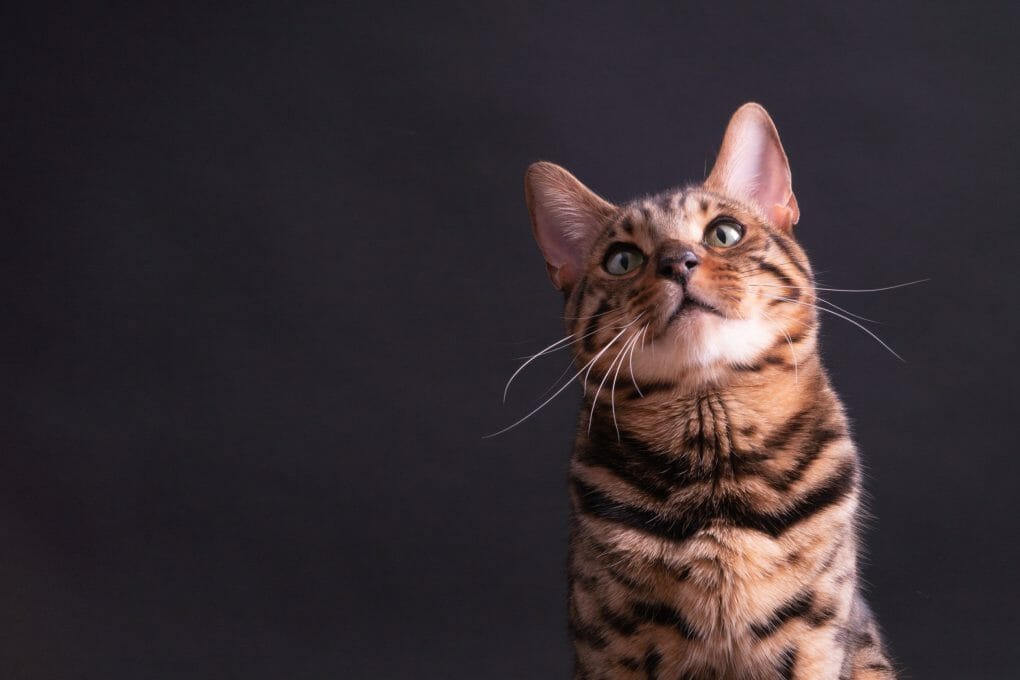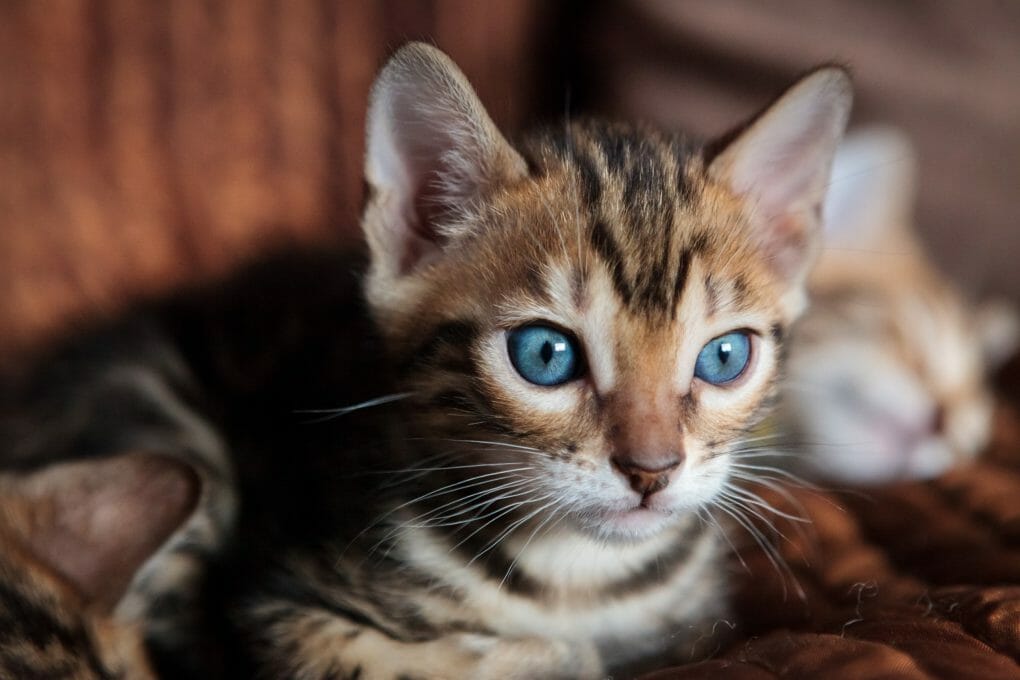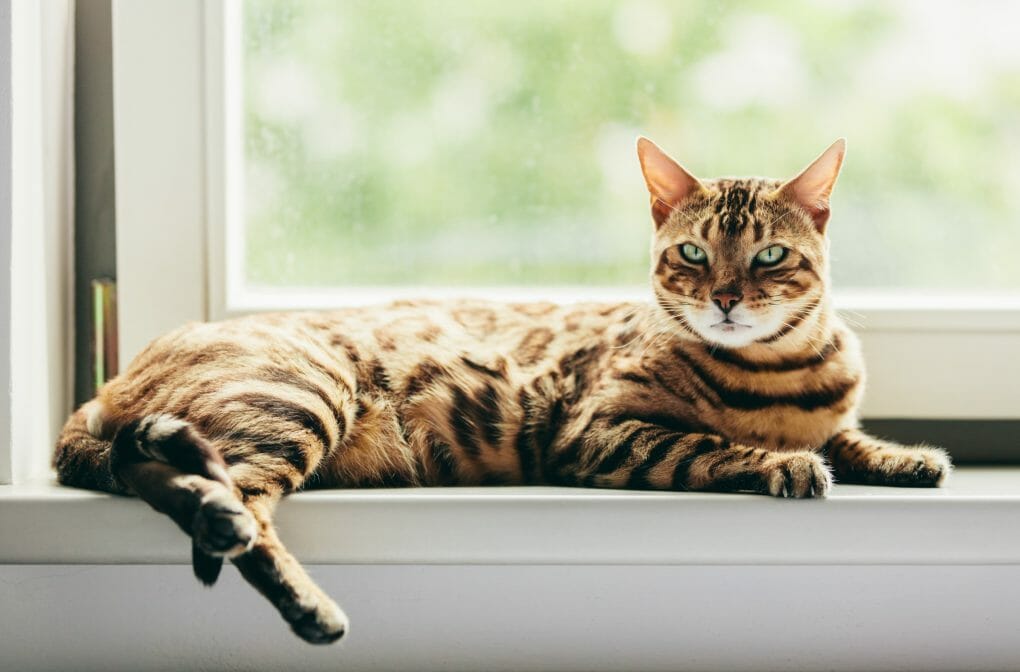Do Bengal Cats Shed: Reasons for Fur Shedding in This Feline Breed and How to Manage Them
Yes, Bengal cats shed their fur to a certain extent. However, they have a relatively low shedding rate compared to other cat breeds. Their coat is typically shorter and denser than other breeds, which may contribute to their low shedding rate. Also, Bengals groom themselves quite well, so their hair doesn’t accumulate on furniture or carpets as much as other cats.
If your Bengal is shedding excessively, there could be a problem with its diet or health condition. Environmental changes are among cats’ most common causes of excessive fur shedding. In addition to external factors such as allergies, hormonal fluctuations (especially during kittenhood) and age can also lead to increased cat shedding.


To help keep shedding under control, it is essential to brush your Bengal cat regularly, using a slicker brush or a comb designed explicitly for short-haired cats. This will help remove loose fur and prevent matting. It’s also essential to provide your Bengal cat with a healthy diet and plenty of exercises to help keep its coat healthy and shiny. Regular visits to the veterinarian and monthly flea prevention treatments can also help keep shedding under control.
Table of Contents
Why Bengal Cats Sometimes Shed
They’re Growing Up
As Bengals grow older, their coat starts shedding more often. This shedding is usually sporadic but can increase during excitement or change. By providing your cat with a scratching post and toys to play with, you can help reduce the amount of shed he produces.
Also, keep in mind that cats don’t like it when things (including furniture) are moved around constantly, so try to do only a little moving around yourself!
Stress
Stress is an unavoidable part of a cat’s life. However, cats are particularly susceptible to it. When cats are under stress, they release hormones that can cause excessive shedding.
There are many ways to relieve cat stress – provide them with plenty of toys and stimulation and ensure they have a comfortable place to hang out indoors or outdoors. If the problems persist despite taking these steps, you should consult your vet for further diagnosis and treatment options.
Changing Seasons
Changing seasons is a time of change for all animals, including Bengals. During the warmer months, Bengals naturally shed their hair. Their high moisture levels make clearing particularly bad during the spring and summer when they try to get rid of all the extra water and dirt in their coat.
If you’re experiencing excessive shedding or balding when seasons change, ensure your cat has plenty of fresh water and good nutrition; this will help keep them healthy and shed less fur overall. Try putting your cat in a calm environment where it cannot escape – cats usually like enclosed spaces as they feel safe and secure indoors. This way, it won’t be tempted to scratch or lick itself excessively due to excessive grooming behavior.


Health Issues
Many different health problems can cause cats to shed a lot of furs. Some of the most common include fleas, allergies, and cancer. If you notice your pet shedding a lot and they have never done this before, take them to the vet for a check-up to be safe. However, if you suspect your cat has health issues, the shedding will likely be one of the first things you notice.
Parasites
Parasites can be a big bummer for cat owners, as not only does it mean that cats might shed more than usual, but also parasites like fleas and mites can cause other health problems. When parasites are left untreated, they can even lead to death in cats.
Several parasites can cause shedding in cats. Some of the most common ones include:
- Fleas: Fleas are tiny, wingless insects that feed on the blood of their host. They can cause itching and scratching in cats, leading to excessive shedding.
- Mites: are tiny parasites that can live on cats’ skin, ears, and hair follicles. They can cause intense itching and inflammation, leading to shedding and hair loss.
- Lice: Lice are small, wingless insects that feed on the blood of their host. They can cause itching and scratching in cats, leading to shedding.
- Ringworm: Ringworm is a fungal infection that affects the skin and hair of cats. It can cause patches of hair loss and shedding.
If you suspect your cat has a parasite infestation, it is essential to have them examined by a veterinarian. The veterinarian can diagnose the problem and recommend the appropriate treatment.
Allergies
Many cat owners are familiar with Bengal cats’ propensity to shed as a natural reaction driven by allergies. You can reduce the shedding by using food or supplements specific for allergy sufferers and medication if necessary. You can also keep your cat’s environment clean and dry, which will help reduce the amount of hair that needs to be shed.
Over Bathing
You can minimize shedding by limiting your cat’s baths to once to twice a month or less and using a hair dryer in relaxed settings. If your cat has accumulated excessive amounts of fur (which happens more often in warm weather), take her to the vet for grooming sessions, where she’ll get rid of unwanted hair!
Hormonal Issues
Bengals can sometimes shed because they are going through hormonal changes. This shedding can be random or happen in specific phases of their life, such as during puberty, pregnancy, or nursing.
If you notice your cat is shedding more than usual, take them to the vet for a check-up. There are reasons their hormones are out of balance, and a vet can give them some relief by adjusting their diet or prescribing medication.
How to Manage Shedding in Bengal Cats


Brush Your Cat
Brushing your cat is a great way to reduce the hair it sheds. This will help remove loose fur and keep them healthy and clean. You can also use a hairball cleaner to clean up any messes made during shedding and keep their environment clean and tidy to prevent excessive shedding in the first place. If you still find your cat shedding excessively, consult a veterinarian for further advice.
A Balanced Diet
One of the main reasons why a balanced diet is vital for cats is because it helps to keep their coats healthy. It’s also important not to overfeed your cat as this can cause them to become obese and susceptible to numerous health problems such as diabetes, heart disease, etc. For cats’ shedding habits to stay under control, provide them with enough food.
Exercise
Bengal cats are high-energy animals, and they need to be regularly exercised. For example, a cat that is not well-exercised will tend to shed excessively – which can lead to a build-up of hair in different areas of the home.
